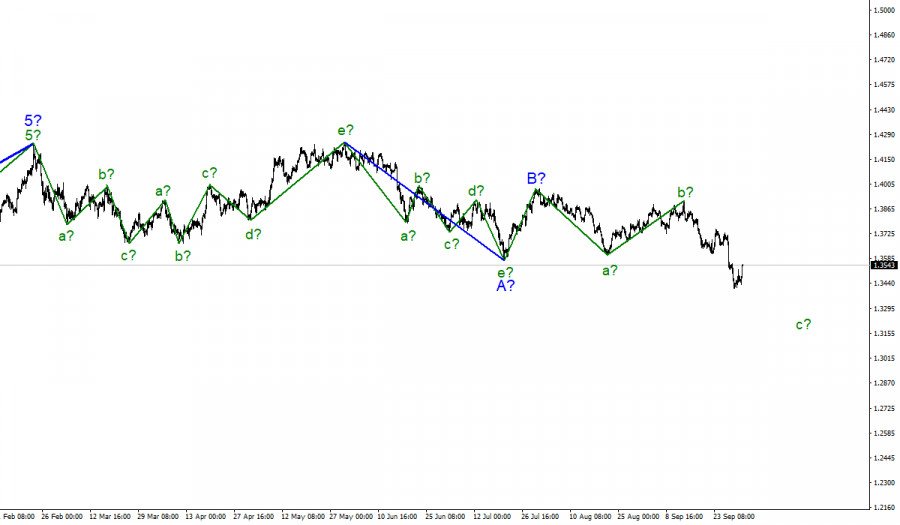
The wave counting for GBP/USD has undergone certain adjustments. The instrument has declined by 300 basis points in recent days, and also made a successful attempt to break the low of the previous waves a and e. Thus, adjustments were made to the wave pattern and now it has acquired the form of a downward trend section, which can also be corrective. This assumption is prompted by the internal structure of the proposed wave A, which cannot be called impulsive. The supposed third wave of this trend segment also takes a non-impulsive form. However, given the length of each wave in the composition of C, it can be assumed that it will turn out to be very long. If this assumption is correct, then the pound gets a high probability of continuing the decline with the nearest target located near the 61.8% Fibonacci level. The exit of quotes from the reached lows today may be the beginning of a future wave d as part of C.
The exchange rate of the Pound/Dollar instrument increased by 75 basis points on Friday. We can say that the markets have already experienced a "fuel shock" and are now recovering. The information background for the instrument was rather weak, nevertheless, the British pound rose quite significantly, and the amplitude of the instrument was quite high. Although only one report could grab the interests of the markets. Manufacturing PMI slightly exceeded market expectations, reaching 57.1 in September. This report almost perfectly coincided with the time when the pound began to rise. However, it is quite difficult to imagine that the markets reacted so violently to this report. Thus, I believe that today's upward movement has a corrective basis. After a decline of 300 basis points, a correction was inevitable.
America's ISM manufacturing index, which was rightfully considered the most important report of the day, also turned out to be better than expected, so the demand for the US currency increased slightly. Also, reports on changes in the level of income and expenses of Americans in August, and the main index of personal consumption expenditures turned out to be quite good. The consumer sentiment index from the University of Michigan was also on top. But what difference does it make if the British pound has been moving up most of the day? This further assures me that the markets were getting rid of the pound in panic amid the fuel crisis, and now it's time for a corrective pullback. The wave structures that the instrument builds continue to be very complex and frankly corrective.
The wave pattern has changed dramatically after Thursday's decline. Now the wave pattern has received a downward view, but not an impulse one. Therefore, now I advise you to sell the instrument for each MACD signal based on the construction of wave C, which can get quite long, with targets located near the calculated mark of 1.3273, which corresponds to 61.8% Fibonacci level. The instrument may rise within the corrective wave d for some time.

The upward section of the trend, which began its construction a couple of months ago, has taken a rather ambiguous form and has already been completed. The construction of the upward trend section has been canceled and now we can assume that on January 6, the construction of a new downward trend section began, which can turn out to be almost any size.
The material has been provided by InstaForex Company - www.instaforex.com